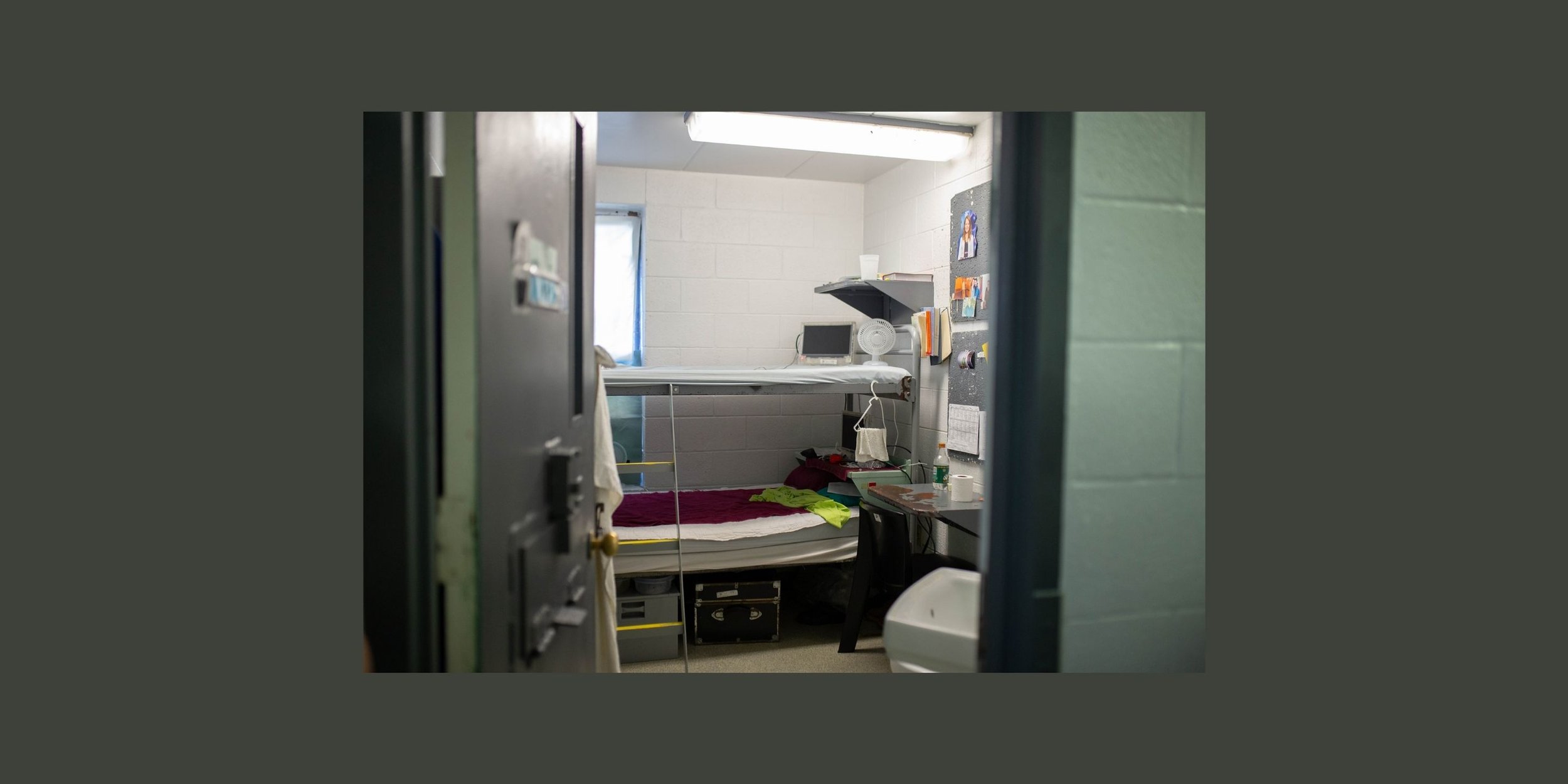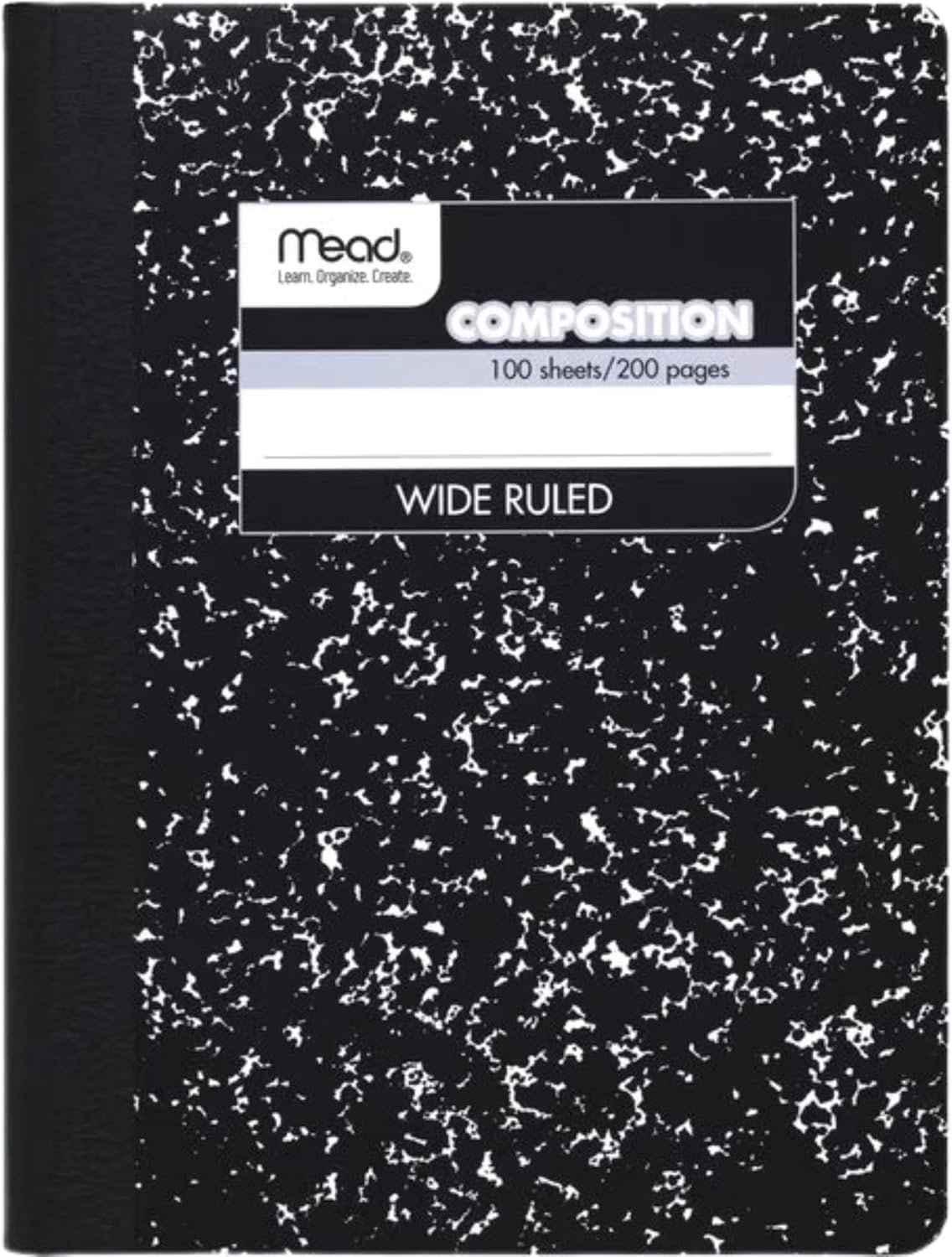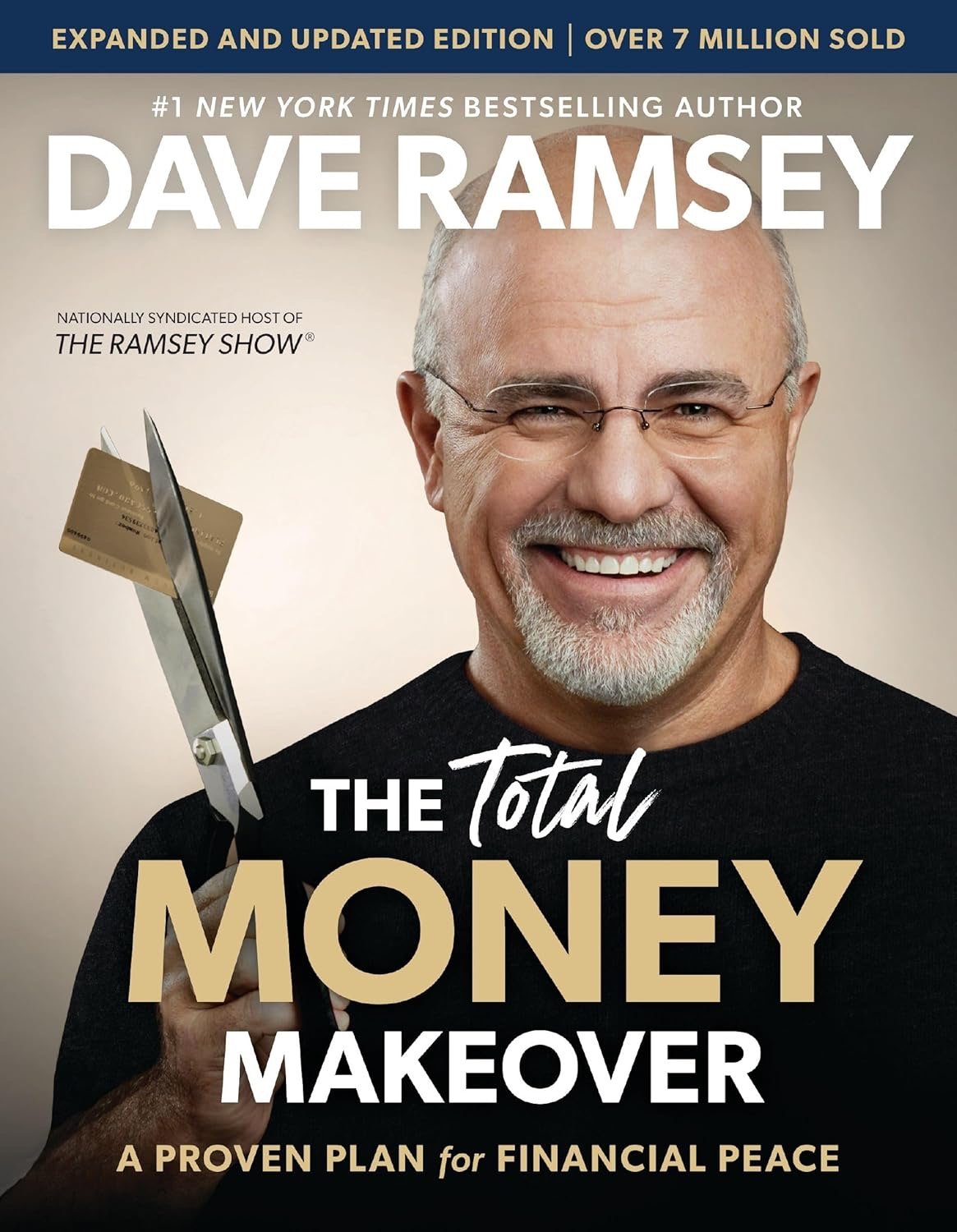Michigan crime and punishment: women’s edition
Michigan may not execute people. But a life sentence here is real, permanent, and devastating in ways that rarely make headlines. Justice doesn’t always look dramatic—but it is relentless.
Michigan doesn’t have the death penalty.
That fact alone often fuels outrage when a horrific crime makes the news—especially when the accused are women who were once trusted and who violated that trust in the worst possible way. People want reassurance that justice will be severe enough. After spending 10 years incarcerated at Women’s Huron Valley, I believe I can speak with sincerity and firsthand honesty.
It will be.
When a woman is convicted of murder in Michigan, there is one destination: Women’s Huron Valley Correctional Facility. It is the only women’s prison in the state. And while it is not an execution chamber, it is not mercy either.
Women convicted of violent crimes are very likely to receive either life sentences or long indeterminate sentences—anything over roughly ten years, and often decades. For many, it is a place they will never leave alive.
The physical environment is stark and unromantic. Imagine something like a college dorm stripped down to its bones: concrete floors, cinderblock walls, metal desks and lockers, chipped paint, rust, and harsh fluorescent lighting. The buildings are large and house hundreds of women. Living spaces are small—often roughly 8 by 10 feet—frequently shared with another person. In many units, the toilet sits in the same room where you sleep and eat, leaving little privacy and no separation from bodily realities. The buildings are old. They are maintained, but age shows everywhere. Heating is inconsistent. The space feels cold—literally and figuratively.
Healthcare exists, but it is minimal. Some medical staff are compassionate. Some are not. Regardless, care is tightly limited by policy and cost. As women age, chronic conditions worsen. Specialized treatment is rare. Dental care is mostly extraction. Whatever teeth you have when you arrive, you will likely lose.
Prison also requires money—something the public often overlooks. Soap, shampoo, deodorant, and basic hygiene items cost money. A small television can cost hundreds of dollars. A tablet—used for email and photos from family—also costs money. Commissary food doesn’t replace meals, but it makes them tolerable.
Most prison jobs pay very little—nowhere near enough to cover basic needs. Realistically, about $100 a month from outside support allows someone to meet necessities and slowly save for essentials. Without that level of support, daily life becomes harder in ways that quietly compound over time.
Many women convicted of severe crimes arrive with limited social support. Friends disappear. Families fracture or vanish. They will live without many of the things they need and want—chronically and, for some, forever.
Inside, reality settles in. Phone calls are short and regulated. Privacy does not exist. Roommates are assigned, not chosen, and compatibility is rare. Conflict is inevitable. Loss of personal property, verbal cruelty, and intentional destruction of belongings are not uncommon parts of close-quarter living. In more hostile situations, a roommate can deliberately damage or destroy personal items and contaminate food, clothing, or bedding with bodily fluids—including urine, feces, and menstrual blood—an ugly but real form of control and intimidation in a space where there is no escape.
What does not typically happen—despite popular imagination—is vigilante violence based solely on the crime itself. Women are not routinely assaulted for what they were convicted of. But they are judged. They are talked about. Their crimes follow them. Silence is rare.
And yet—life continues.
There are jobs. Doctor appointments. Exercise yards. Church services. Classes and programs. Over time, people form routines. Prison is not constant chaos; it is sustained consequence. Day after day. Year after year. With no real escape from memory.
For the families who lost someone, nothing about this restores what was taken. No sentence balances that scale. But know this: incarceration is not a pause or a reset. It is a slow, permanent reckoning. Every ordinary day these women live is shaped by what they did—and by who they can never be again. They have completely and forever ruined their own lives.
Michigan may not execute people. But a life sentence here is real, permanent, and devastating in ways that rarely make headlines.
Justice doesn’t always look dramatic—but it is relentless.
Christmas for Misfits: My December article for the Trinity Newsletter.
I’ve experienced Christmas at both extremes—from the magic of childhood wonder to the desolation of spending the holidays behind bars. Christmas has a way of exposing what we’re missing as much as what we’re celebrating. But sometimes grace still shows up—in unexpected places, among strangers, and in simple acts of presence. That, I’ve learned, is where the real meaning of Christmas lives.
I’ve had the privilege of knowing the wonder of a childhood Christmas morning—when Santa delivered a Barbie Dream House and it felt like an impossible wish had slipped into my hands, as if magic itself had delivered it. I’ve also known the joy of having my own children wake early on Christmas morning and sit at the top of the stairs, practically vibrating—waiting for their dad to confirm whether Santa had indeed left gifts—and listening to their gasps of surprise and exclamations of excitement over dolls and fishing tackle.
And then, I’ve known the absolute desolation of the first Christmas you spend locked in a cell—followed by many more holidays that were just as gutting.
Christmas takes on a different shape when you’re behind bars. The world is out there lighting candles, baking cookies, and taking family photos while you’re staring at cinderblock walls pretending the day is normal. It isn’t. You feel it in the air, in the silence, in the way people walk around trying not to cry or snap. Some hide in their bunks. Some just sit there numb. Christmas in prison isn’t about gifts or carols—it’s about surviving a Holiday season that reminds you of everything you’re missing and everyone you can’t touch.
It doesn’t have to be a prison cell that separates you from the people you love during the holidays. Sometimes the distance is emotional. Sometimes it’s old wounds that never healed. Sometimes it’s addiction, family fractures, estrangement, grief, or generational trauma that still echoes years later. Loneliness has a hundred disguises, and every one of them can steal the holidays right out from under you.
I know what it feels like to brace for impact the moment a sentimental Christmas commercial comes on. Or when a decades-old carol sneaks up on you in a grocery store aisle and your whole body reacts before your mind can catch up.
I consider it a privilege to have lived both extremes—the wonder and the wounds.
The first Christmas I was free was not the triumphant Hallmark moment I had spent ten years imagining. My family and friends all had their own traditions, their own people, their own rhythms. I was still tied to strict parole restrictions. I didn’t know where I fit or where I was supposed to go.
Then a friend invited me to something unexpected—what I now call “Christmas for Misfits.” Although, truth be told, I was the only true misfit there. It was a gathering of several couples, a few single adults, people whose grown children lived far away, people who had already celebrated or were postponing Christmas until January. What struck me was that even though they all knew the hosts, they didn’t really know each other—so while they were new to me, we were, in a way, all new to one another.
There was food, laughter, warmth—and an unexpected ease that came from all of us being strangers in different ways. No tight-knit group, no insiders’ circle, just a room full of people quietly deciding to make space for one another.
And before the meal, the hosts—a deeply faithful couple—prayed grace over our potluck. It wasn’t long or theatrical. Just a simple, heartfelt prayer. But it hit me like a wave. I felt the emotions of the day, the strangeness of freedom, the loneliness, the gratitude… and under all of that, something else. I think it was my faith and theirs showing up at the same time.
Because when you’ve been through enough darkness, even a small beam of light can feel blinding. And woven through the sparkle and the food and the awkward introductions was the deeper meaning of the season: God shows up in unlikely places, for unlikely people, in the most unlikely ways.
Being a Christian doesn’t spare us from pain—Scripture makes that clear. The Bible is full of people who suffered, wandered, doubted, lost everything, and still somehow found God waiting for them anyway. Sometimes not to fix the situation, but to be present in the middle of it.
That’s why the Christmas story hits so differently when your life is messy. God didn’t enter the world in comfort or stability. He came into political tension, family stress, danger, and chaos. He came as a baby—small, vulnerable, breakable. Light arriving quietly in the dark.
So when I sat at Christmas for Misfits—surrounded by strangers, eating cookies and passing casserole dishes—I realized something: the magic of Christmas wasn’t just nostalgia. It was presence. God’s presence. And the presence of kind people willing to make room for someone who wasn’t sure where she belonged.
The meaning was in the air just as much as the wonder.
Some years we are the ones carrying the light. Other years, we are the misfits grateful for a place at someone else’s table.
And both are holy.
If Christmas feels distant, I hope you stumble into a “Christmas for Misfits” of your own—an unexpected room, an open seat, a flash of kindness you didn’t see coming. And if you’re in a season where you do feel the wonder, spread it generously. Someone near you may need it more than you think.
Thank you for reading.
Hail Marys and Heavenly Warfare: A Faith Reflection for the Trinity Newsletter.
There are prayers you whisper… and then there are the desperate, knees-on-concrete, “God, I need You right now” kind. The kind where silence feels like abandonment, and you start wondering if your words got lost on the way to Heaven. I’ve been there — begging, pleading, bargaining — and wondering if my prayer got tackled long before it reached God.
I was in jail. Had been for months. I was voraciously reading everything — anything to make the hours go faster. That included the Bible. One day, I came across this passage in Daniel, and I thought… wait… what???
Daniel was praying for wisdom — big, world-changing stuff. He wanted to understand what God was doing with nations and kings. And apparently, God answered him right away. But then came this part that stopped me cold.
The angel tells Daniel, “From the first day you started praying, your words were heard — but the Prince of Persia blocked me for twenty-one days.”
Hold up. You’re telling me Daniel’s prayer got blocked? Like there are some Infernal Linebackers?
I wasn’t in Babylon when I read that. I was in jail. And I wasn’t praying for global peace or prophetic insight. I was praying for the catastrophe I’d created — to and for the people I loved most in the world — and for my own hide. I needed God to hear me now — not after some cosmic turf war in another realm.
But honestly, my prayer of desperation isn’t unique to anyone. Desperation is desperation — whether it’s a broken marriage, a scary diagnosis, a lost job, or a life that’s veered so far off course you don’t even recognize yourself anymore. Pain doesn’t need a prosecutor or judge to impose a sentence.
Desperation is desperation …
So I started wondering — does that happen to us? Do our prayers ever get caught in spiritual crossfire, or is that just Bible-story symbolism that doesn’t touch real life? Because from where I was sitting, it sure felt like my prayers were bouncing off concrete walls. That verse troubled me. I wanted to believe God heard me “from the first day,” but I couldn’t ignore the delay — the silence, the waiting, the nothing. Was something blocking my prayers, or was I just not listening?
And then there’s that line from Proverbs…
“Trust in the Lord with all your heart, and lean not on your own understanding;
in all your ways acknowledge Him, and He will make your paths straight.”
— Proverbs 3:5–6
Beautiful words — but easier said than done when all you’ve got is your own understanding. When the church volunteers are gone, your cellmates might have some theology, but they’re in the same boat — not exactly the best crew to lean on for spiritual clarity.
Things happening behind the scenes.
Even today I don’t have a tidy answer. Maybe Daniel’s story means there really are things happening behind the scenes. Or maybe it means God’s timing isn’t built around my panic. Either way, I still pray — loudly, desperately, honestly. If the Prince of Persia’s on defense, I’m still throwing prayers downfield till Heaven catches one.
Thanks for reading.
When a Nap Changed Everything.
Sometimes the most faithful thing I can do is step back, trust, and let God do the work. I don’t have to hold everything together. Worry doesn’t add — it steals. Faith, surrender, and rest create the space where we allow God to move.
What a NICU Mom Taught Me About Surrender.
This was a story shared with me while I was in jail. I leaned on it many times since, and often shared it when I was in prison.
A mom gave birth to a son by emergency cesarean.
Her baby was whisked away to the NICU, and he was not doing well. She followed as soon as she was off the operating table, in pain both physically and emotionally, and stood vigil over her son.
Hours turned into days. He got worse. The wires and tubes were terrifying, but even beyond that — he just didn’t look good. This baby was dying.
The mom wasn’t doing well either. No real food, no real sleep, her body was breaking down. Still, she refused to leave his side. Her prayers were desperate: begging, bargaining, promising anything and everything. And yet, the little boy kept declining.
Finally, a moment came when she had to step away. Utter exhaustion overcame her. Before leaving, she poured out a thousand prayers and reluctantly left the room and laid down. Despite her dread and fear, she fell into a deep, healing sleep.
When she woke, she bolted back to the NICU. What she saw was completely different. The wires and monitors were still there, but her son’s color was glowing, his face alive. The nurses told her he had suddenly taken a turn for the better. Later, the doctor confirmed: he was making vast improvements.
Her belief about why it happened? She finally had to step away — and let God do the work.
She had believed she was keeping her son alive by staying at his side — that the moment she left, he would die. That fear kept her glued to his bedside. But when she surrendered, healing came.
Jesus said in Matthew 6, “Who of you by worrying can add a single hour to your life?” Worry doesn’t add — it steals. Faith, surrender, and rest create the space where we allow God to move.
In prison, our families live life without us. We worry our partners will move on. We fear our children won’t be safe. We wonder if we’ll be forgotten. I would see the struggle in my friends. Although walking around, they were "keeping vigil" with their thoughts and fears. Desperate prayers going up constantly. But like that mom, we’re not actually helping. We have no power. Instead, let God do the heavy lifting. Have faith in His plan.
Even now that I’m free, fears remain: health of my loved ones, my children’s happiness, relationships, politics, and future needs. But this story still steadies me. I don’t have to hold everything together. Sometimes the most faithful thing I can do is step back, trust, and let God do the work. This mom’s story is one example of God’s timing and mercy, not a formula. Sometimes healing comes in heaven rather than here on earth, but the call to trust Him remains the same.
“For I know the plans I have for you,” declares the Lord, “plans to prosper you and not to harm you, plans to give you hope and a future.” — Jeremiah 29:11
Thank you for reading.
Sowing In: A Faith-Based Prison Reflection.
In prison, words weren’t just words—they shaped the culture. You never spoke failure into existence, and you learned to sow prayers into others’ lives even while waiting for your own breakthrough. “Sowing In: A Faith-Based Prison Reflection” is about how that practice reshaped my faith and turned survival into something sacred.
I always knew that words carried weight, but once I was in prison it became more than just an idea—it was the culture. You never spoke bad outcomes into existence. If someone had a parole board hearing coming up, you would never say, “You won’t get a flop, but if you do it will be fine. Most flops are less than a year.” You’d get yelled at for even suggesting it. That’s how serious it was. The culture was to keep your mouth shut about failure and lean hard into the possibility of success.
This vibe.
Out of that culture grew a practice: sowing into others what you hoped for yourself. I prayed for women trying to get into programs, those with upcoming appeals, and those waiting for important visits. I prayed for the people going before the parole board—especially when my own turn was coming—and for those going home, especially when it was finally my turn to leave. I prayed with everything I had for my ex-husband and my children. My prayers for other people’s children and family members were the most reverent—almost desperate—because deep down I longed for my own children and loved ones to be covered in prayer. If their struggles mirrored mine, it felt like God was giving me the opportunity to intercede for my family through them. Looking back, you could line up my prayers with my prison years and see what I was facing—hoping for a mentorship, a move to a better unit, or a job—reflected in the prayers I offered for others.
The theology of this practice is complicated. Prayer doesn’t work like a bargain, and God isn’t manipulated into blessing me just because I prayed for someone else first. Faith doesn’t work like superstition. Still, something in the practice reshaped me. It pulled me out of self-pity and taught me to look outward, to want good things for others even while I was waiting for my own breakthrough. If God honored those prayers, it wasn’t because I had the formula right, but because I was learning to care about more than just myself.
Scripture speaks directly to this tension. Paul reminds us, “Do not be deceived: God cannot be mocked. A man reaps what he sows.” (Galatians 6:7). At the same time, we are told, “Let your requests be made known to God.” (Philippians 4:6) and “Pray without ceasing.” (1 Thessalonians 5:17). These verses point us away from superstition and toward trust: God hears because He is faithful, not because we’ve stacked up enough prayers in the right order. Jesus Himself warned against turning prayer into a formula, saying, “When you pray, do not heap up empty phrases as the Gentiles do, for they think they will be heard for their many words.” (Matthew 6:7).
Prayer. Also Pray-er
The heart of prayer is not bargaining but relationship. Intercession is a holy calling—we lift others before God because Christ intercedes for us (Romans 8:34). So while my practice inside prison was imperfect, the impulse to pray for others pointed me toward something true: prayer reshapes us, and God in His mercy works through even our flawed understanding to draw us closer to Him. And His grace means we often reap more good than we deserve, because the harvest of His love is greater than the seeds we plant.
Thank you for reading.
Panties: A Jail Story
In county jail, even your underwear isn’t really yours. Twice a week, the officer rolled a cart through, swapping out dirty clothes for “clean” ones that had already been on someone else. Sometimes those panties came back stretched, sometimes… altered. Let’s just say nail clippers in a toilet stall can turn Fruit of the Loom into a whole new size.
When I was in county jail, they issued everything: socks, panties, bras, t-shirts, pants, sweatshirts. Everything orange, everything standard-issue. The undergarments were basic Fruit of the Loom — nothing fancy. Some jails will let you have your own undergarments or purchase some, but not ours.
I’m a small woman, and at that time I was tiny. I'd lost a lot of weight because, well, I was going through something. The smallest size panties they had were a size five. Twice a week, the officer would come around with a cart, collect our dirty clothes, and hand out “clean” ones. I put that in quotes because they weren’t yours — they were just whatever came back from laundry. If another woman wore size fives yesterday, I might be wearing her panties today. I had to just trust that the laundry got the job done. It was gross, but there was no alternative.
Our cell had eight to ten women. You got to know each other’s sizes. Some of the women were much larger than me — tall, big-framed, or heavyset. But when laundry came, a few of them would ask for panties in size five. The officer would laugh out loud: “There’s no way you wear the same size panties Stapleton does.” But they’d insist, swearing they were a five.
Here’s where it got weird. I started getting “fresh” pairs but they weren’t just stretched out — they’d been altered. Cut at the waistband. Someone (a few of them?) had figured out how to take nail clippers (available upon request from the officer) into the bathroom area, where there was a little privacy, and slice the elastic so the panties would fit.
Just like this.
So, yes — women were cutting up jail-issued underwear with nail clippers just to prove to themselves (or maybe to the world) that they were a size five.
The whole thing was equal parts disgusting and absurd. But that’s jail. People cling to their narratives, even if it means mutilating a pair of Fruit of the Looms in the toilet stall.
Thanks for reading
Playing Chess in King Henry's Court: A Prison Metaphor and Story
“In prison, hope can hinge on a single conversation. I believed I was being seen as more than a prisoner—until one moment reminded me how quickly that identity can be stripped away. This essay is about that sting, the power of labels, and the fragile line between encouragement and betrayal.”
In prison, I joined a group that brought in volunteers from a local university—mainly graduate students and their professors. For years, I looked forward to those sessions. They offered us artistic outlets, creative workshops, classes for college credit, and—maybe most importantly—a break from the normal prison grind.
It was refreshing when people came in from the outside and they weren’t staff, they weren’t officers. They called you by your first name. They spoke to you like you were just a regular person. They read our writings and gave us feedback that was encouraging. They looked at our drawings and recognized our underdeveloped (or in some cases developed) talents. They looked us in the eye and said we mattered, and by their attention and presence I believed them. They told us we were smart. We all believed it.
The group also hinted they could help us find employment once we were released. We were left with the impression that they would be there to help us. They weren’t a re-entry program, but there were some connections and a willingness to help—they were part of a university, after all. That mattered to me. I have a bachelor’s degree in science, and I worked for a short time in both academia and industry. I wanted to get back to research. I wanted a job that made me feel like me again.
And suddenly here was my chance to get it back. I had this vision of working alongside a patient PhD in a lab doing meaningful research—catching up on the latest methods, bringing my skills current, and earning a living wage. I pictured a mentor surprised to find someone eager to throw themselves into the work—whatever hours, whatever it took. What I pictured was… redemption.
But in prison, you don’t have power. It’s like living in the court of King Henry VIII—you have to maneuver carefully, scheme quietly, and find ways to stand out without overstepping. Everything you ask for feels like strategy—like a game of chess. You rehearse, you rewrite, you plan your timing. So I carefully prepared how I would approach the director of this program. I waited years until it was closer to my release date, then I waited until a day she was in the prison. And then a moment when she wasn’t swamped by inmates or rushed out by officers. Then I made my move.
I told her about my degree, my experience, and how I’d been out of the field for years but was teachable and willing to do whatever it took to catch up. I tried to show determination, making it clear I wasn’t asking for a handout—I was asking for a chance. If I ever had anything close to a natural talent, it was research. The whole exchange was my most sincere and desperate elevator speech, offered in the few seconds I hoped might change everything.
She paused, she looked at me, and she carefully said: “Well, yes, we do help people get jobs… but more like at a restaurant, or maybe retail.”
In communication theory, they call this a disconfirmation moment—when someone denies the identity you know to be true about yourself. When I said, “I’m a scientist,” what she didn’t say, but communicated, was: “No, you’re a prisoner who can maybe work as a waitress.”
It wasn’t just the words that crushed me—it was the look. Up until then, I thought she saw me as a person. In that moment, I realized she only ever saw me as a prisoner. My place wasn’t the same as hers. It wasn’t in a respectable position in her university.
From a normal citizen’s perspective, maybe the director was being pragmatic. People assume that committing a crime closes doors to higher-level professional roles, especially those tied to trust and credentials. To them, her words might sound like realism, not betrayal. But that’s not how it felt to me. The power of the betrayal was in the gap between what had been implied and what was delivered. Hope had been built, and that was my mistake. I had been in prison a long time. I knew better.
This was the director, and that made the moment sting more. It didn’t make me think the whole program was worthless—it wasn’t. The classes, the encouragement, the art, and the chance to feel like a person again were real gifts. But this exchange exposed a seam in the fabric, a reminder that no matter how hard I worked or how much I hoped, the word prisoner still shadowed everything. The harsher label of felon would trail me long after release, closing doors I believed she might help open. In that moment, I realized she hadn’t transcended that line the way I thought she had.
Still, I believe in the program, and I believe in her and the good work she has done. I think she would celebrate any success I, or others from this program, achieve. I wonder if she ever thinks back to that moment the way I do. Some interactions linger, the kind you keep turning over in your mind to make sense of. I walked away from that conversation with heavy feelings. And because I believe she is the kind of person who would, I trust she did too.
Thank you for reading.
Held: A True Cliffhanger Story
My foot slipped in the mud, and suddenly I was hanging off the trail—legs scrambling, hands clawing for something solid. Below me was just… abyss.
Kilimanjaro
While preparing for a climb up Mount Kilimanjaro, our group planned a day hike up a smaller mountain in Africa. The trail we followed wrapped around the mountain, and as we came around a bend, we saw that a section of the path had been washed away by recent rains. It wasn’t a massive drop—just a muddy slide where the trail had broken—but it was enough that we couldn’t simply walk across. We had to jump.
The guys in the group jumped with no issue. I would have too. I’ve been a dancer and athletic-ish my whole life. But our guide and friend, Joe, looked at the path, then looked at me. I’m much smaller than the other guys, and he made a call—he offered his hand. He wasn’t comfortable with me jumping without help.
Holding someone’s hand while jumping sounds simple, but it threw me off just enough that I didn’t land quite right. My foot slipped in the mud, and suddenly I was hanging off the trail—legs scrambling, hand clawing for something solid. Below me was a long stretch of mud sliding out of sight. It wasn’t a fall to certain death, I don't think—just the kind of uncertain death. Or maybe it wasn’t death at all. Just… abyss.
I didn’t know where it led, only that I didn’t want to find out.
It was loud in my head—rushing blood, startled voices, panic. And then, through all of it, I heard one steady voice:
“I’ve got you.”
And again, more firmly:
“I’VE GOT YOU.”
When I looked up, Joe’s grip was strong, and I could see it in his face—and as I looked to where his hand gripped mine, my brain finally registered it. My panicked, mammalian, prefrontal-survival-mode brain caught up just enough to understand: he really did have me. He had me. I realized my panic and flailing were actually making the situation worse—causing a bigger problem than the slip itself.
I stopped flailing, took a breath, and he easily pulled me back onto solid ground.
Later, as I thought about what happened, I realized how often we try to save ourselves in our own strength, all while God is already holding us steady. In moments of fear and uncertainty, we may thrash and panic, forgetting the One whose grip never slips.
Joe’s voice reminded me of God's: calm in the chaos, firm in the storm, saying simply, “I’ve got you.”
Thank you for reading
Tomato Witchcraft and the Compost Gospel-A Prison Story
In prison, I planted tomatoes but never tasted one. The best ones I ate were never mine. Sometimes the real harvest isn’t the one you grow.
There was a corner of the prison that didn’t quite feel like prison. Not really. It was a building that housed the Building Trades program and the automotive shop, tucked far enough from the main compound that, if you squinted and ignored the razor wire and the matching uniforms, you could almost pretend you were somewhere else. Almost.
Inside, there was one officer posted up in a little office, but for the most part, it felt like our space. We learned how to build simple projects, the basics of NCCER (National Center for Construction Education and Research), and the gospel according to OSHA. But beyond that, we were responsible for the building and the yard. We even had a small patch of ground to care for. It wasn’t much, but it mattered.
Now let me be clear: I am not a gardener. I have no use for flowers—other than that they’re pretty and I totally gush when boys give them to me. But when our instructor didn’t object to us planting vegetables, my ears perked up. Tomatoes? Real tomatoes? The only tomatoes I’d seen in prison came in a plastic bag, two sad soggy slices meant to dress up a sandwich. I was grateful for them, don’t get me wrong—but they weren’t real tomatoes.
Then came the lifer. A woman who had been down longer than I’d been legally allowed to vote. She was a tutor in Building Trades and had somehow—don’t ask me how—come across a handful of cherry tomato seeds. I didn’t ask questions. I just found a spot near the flower beds and planted those seeds like they held the secret to parole.
I hovered. I prayed. I watered. I picked up worms and relocated them to the garden bed like a dedicated, trembling, gagging worm chauffeur. (For the record, I loathe worms. I made actual guttural sounds handling them.)
Then came sprouts. Tiny green promises poking through the dirt. I was ecstatic. I dragged the lifer tutor out to admire my work. She gave the garden a once-over and promptly informed me that all but two of the plants were weeds. I’d been mothering weeds. Hovering, praying, weeping over weeds. It was the thrill of victory, immediately followed by the face-plant of defeat (see what I did there).
Only two tomato plants survived. But I kept showing up, whispering to those plants like a delusional tomato witch. I even got on the ground and pressed my nose to the leaves. And they smelled like tomatoes. Earthy. Honest. Hopeful.
And then I “graduated out.” Finished my coursework. Booted from the program. No warning. No final harvest. No tomato.
But here's the twist.
Just around the corner from Building Trades was the Horticulture Department. They grew real vegetables. Lots of them. Over 15,000 pounds, according to the latest brag sheet. And we all shared the same compost pile.
One day, my friend and I were hauling yard waste out there, and we spotted a vine. It had tomatoes on it—technically rotting—but tomatoes nonetheless. There wasn’t a moment of hesitation. We looked at each other, nodded like bandits, and grabbed the ripest ones we could find. They were dusty, borderline sour, kissed by decay—and hands down the best tomatoes I’ve ever eaten in my entire life.
Prison changes you. It lowers your standards and raises your gratitude. You learn to savor the little things—a sunbeam on concrete, a smuggled book, a tomato still warm from the sun.
I never got to eat the tomatoes I grew. But I devoured the ones I found. There’s a lesson in that, I think.
Sometimes the fruit doesn’t come from the plant you nurtured.
Sometimes the best things come a little late and slightly off.
Sometimes you just eat the damn tomato.
Thank you for reading
The Freedom to Go to Church: A Prison Story
The moment I stopped taking church for granted. I never thought I’d have to run toward Jesus with a plastic chair—but prison changed how I see religious freedom.
In America, we have religious freedom. But for most of us, it’s easy to take that freedom for granted. Nothing made that clearer to me than prison.
When you first arrive, you're placed in a separate intake unit—an isolated, high-security area where you're locked in a tiny room with a roommate for 23 hours a day. Processing into general population takes time. For me, it took a couple of months.
This is a picture of a cell at WHV. When you first get here, it’s bare. No pictures. No hangers. No fan, no TV, not even a cup. Everything you see now is a luxury—earned over time.
But there was a bright spot: the prison allowed church services, led by volunteers from local congregations. If it was your first time attending, they handed you a Bible—a soft-covered one you held like treasure. And for women like me, that church service was more than a religious ritual. It was a lifeline.
Word spread fast when volunteers were in the building. The officers announced that church would be held in the dayroom, but that seating was limited—first come, first served. If you wanted a spot, you had to bring your own chair. So we prepared—placing our chairs by our doors, ready to sprint (well, walk quickly—no running in prison!) the moment the call came.
When they called church, it was like a holy stampede. We rushed out, chairs in hand, not wanting to miss our chance to worship. And in that moment—speed-walking down the hall with a plastic chair in my arms—it hit me: all those Sundays back home, all the chances I had to go to church freely, and how casually I treated them.
This! Exactly this but with 50 other women…
Now, I was running toward Jesus with a chair.
By the time we were carrying our own chairs into that service, most of us had already been through something—trauma, loss, shame, rock bottom. We showed up full of either deep gratitude or deep pain. Some of us were leaning hard into God. Others were just hoping He was real. But none of us were there to play church. We were there because we needed something holy to hold on to.
When I got to the dayroom, I found a spot to put my chair and sit. The volunteers were kind. They asked my name—not my number. They didn’t lecture. They just wanted to pray with us, sing with us, share the gospel with us. And they gave me a Bible.
That moment reminded me: freedom doesn’t always mean being outside prison walls. Sometimes it means being seen, being loved, being given the chance to worship.
I’ll never take church for granted again. After ten years of wishing I could sit in a real church, it’s not lost on me what a blessing it is to walk through those doors. Every opportunity I have to be here—I take it, with gratitude and reverence.
Thank you for reading
The Shank Tree: A True Story from Prison Shop Class
“It was early in my sentence when I joined the Building Trades Program, and for a few hours each afternoon, it didn’t feel like prison. We had music playing, real projects in our hands, and a teacher who treated us like people. Then came a special assignment: build a metal trellis shaped like a tree—using a plasma cutter, grinder, and welder. I was honored. But the real twist? The ‘leaves’ looked a whole lot like shanks...”
When I was in prison, I found something kind of miraculous: normalcy. It was rare, but every now and then, something would feel… almost human. For me, that something was the Building Trades Program.
It was early in my sentence when I got into the class. We met in the afternoons, and stepping into that shop felt like stepping out of prison. Music played. People were working on real projects. The teacher talked to us like we were people—not numbers or threats or burdens. Even the officer assigned to the class wasn’t looming like a tower of doom. It just felt... good. It felt like life.
Then one day, my teacher came to me with a special project.
He handed me a photo of a metal trellis shaped like a tree, artistic and beautiful, with metal leaves curling off the branches. He asked if I’d make it.
This isn’t it exactly, but close. In mine the leaves had more curve. But this is the general idea.
I felt honored, honestly. It meant he saw something in me, and I was so in. I was also really honored that I would be learning to use the plasma cutter, the grinder, and the welder. That kind of trust and responsibility wasn’t something I took lightly.
That’s how I ended up making what we now affectionately called “The Shank Tree.”
Why the name? Well, the leaves weren’t your typical oak or maple variety. They were shaped more like—how do I put this delicately—shanks. Seriously. They had that same curved, tapered look. So, there I was, plasma cutting dozens of sharp, metal leaf-shaped pieces, grinding and welding them onto a frame to bring this trellis to life.
Even the teacher laughed about it. We all did. But when we heard the warden or some higher-ups might be doing a walk-through, we’d gather up all the “leaves” and stash them in a container in the corner. Just imagine the optics: a group of prisoners making dozens of razor-sharp metal objects. Not ideal for a surprise inspection.
It took months—more than a few do-overs and plenty of help—but the Shank Tree eventually came together. It didn’t look exactly like the photo (okay, it looked nothing like the photo), but it stood tall. It was ours. And I was proud of it.
At one point, rumor had it that the finished piece would be displayed in front of the prison. I’m not sure if it ever made it all the way out there. Last I heard, it was still somewhere near what used to be the Building Trades building. Right where it belongs.
So yeah. That’s the true story of how I made a tree full of shanks in prison.
And no, I don’t recommend using it for shade.
Thanks for reading.
The Father Who Waited: A Father’s Day Commentary on the Prodigal Son
Some fathers rescue. Others wait—on the porch, in prayer, through tears. They don’t chase rebellion, but they never close the door. That kind of fatherhood is a holy ache.
Father’s Day usually spotlights strength—strong arms, strong wills, strong guidance. But the most powerful father in Scripture didn’t slay giants or swing a hammer. He waited.
Jesus tells the story of a younger son who demands his inheritance early, squanders it in wild living, and ends up feeding pigs in a foreign land. Broke and broken, he decides to return home, hoping just to be treated like a servant. But while he’s still a long way off, his father sees him, runs to him, and welcomes him with open arms, a robe, and a feast.
In the story, we tend to focus on the boy—his rebellion, his fall, his return. But tucked inside that parable is a father who does the hardest thing a parent can do: he lets go. Not out of apathy or anger, but out of love. A love that understood you can’t chain someone to wisdom. You can’t force maturity. So he let the door swing open—and watched his son walk into a dangerous, disorienting world.
That father waited. Not with crossed arms, but with hope. Not with “I told you so,” but with open arms and a robe ready. Maybe he checked that road every single day.
And when his son returned—filthy, broke, humbled—the father ran.
Some fathers rescue. Others wait—on the porch, in prayer, through tears. They watch their kids stumble and ache with every wrong turn. They don’t chase rebellion, but they never close the door. That kind of fatherhood is a holy ache.
And while we’re at it, let’s not forget—this isn’t just the story of one wayward son. It’s the story of two brothers, both a little bit jerky in their own way. One was reckless and ran off. The other stayed put but simmered with self-righteousness. And the father loved them both. Grace wasn’t just for the one who left; it was for the one who stayed angry, too. This story isn’t just about a prodigal—it’s about a parent who loved beyond reason.
And in a world that’s louder, faster, and more distracted than ever, where dads are pulled in a hundred directions and time slips by like the verses of Cat’s in the Cradle, the call to be present might just be the most countercultural move of all. That father didn’t wait for the perfect moment or make his son earn his way back. He ran. He embraced. He restored.
To every dad, granddad, or spiritual father who’s left the porch light on—we see you. Thank you for loving with patience, for letting go when you had to, and for running when it mattered most.
Thank you for reading.
Make It Your Best Day! A prison story.
“Make it your best day!”
I said it once in prison.
It went dead quiet. Then:
“Oh hell no.” “B!tch, please.”
I just kept walking—grinning.
Because weirdly, it was my best day.
My ex-husband is a high school principal, and every single morning—every single morning—he gets on the PA system and closes the announcements with the same phrase:
“Make it your best day.”
If you're a student in his school, grades 7 through 12, you’ve heard it roughly 180 times a year. Over 20 years, that’s something like 3,600 times. It's consistent. It’s uplifting. It’s wholesome.
And let me tell you about the time I said it once in prison.
Spoiler alert: I did not get shanked.
It was a beautiful morning—the kind of crisp, clear morning you can still appreciate even behind a chain-link fence topped with razor wire.
I was on the walkway, heading in one direction while a group of girls were heading the other way toward school. You know how it is—small clusters of two or three, chatting quietly, easing into their day with that slow early-morning energy.
I passed them and, channeling the ghost of announcements past, I said it. Loudly. Boldly. Cheerfully.
“Make it your best day!”
Everything went dead quiet. Like movie-scene quiet. Like someone just slapped a nun quiet.
Then I heard it behind me:
“Who the f—?”
“Oh hell no.”
“What did that b!tch just say?”
“No. She didn’t.”
“B!tch, please.”
I just kept walking. Smiling. Because in that one moment—oddly—I did make it my best day. I never looked back so I didn’t see their faces. But I imagined they looked something like this…
And somewhere out there, my ex was unknowingly being spiritually high-fived.
So go ahead.
Say the thing.
Be the weird one.
Make it your best day.
Even if it’s behind bars.
Especially then.
Thank you for reading.
Not Exactly a Bright Light and Dead Relatives Beckoning: My Near-Death Experience
I didn’t see a tunnel. I didn’t float above my body. And no long-lost relatives came reaching for me with glowing arms. What I experienced was something stranger, quieter, and somehow more profound. I was standing—if you can call it that—before a group of old men. Wise. Ancient. Watching me with the kind of gaze that sees straight through ego and into essence. No words were spoken, but everything was understood.
This wasn’t comfort. This was clarity.
It wasn’t some tunnel of light or dead relatives beckoning. I didn’t wake up, exactly—I just became. I was suddenly in this massive, ancient room. Stone walls that seemed to go on forever. The place felt old in a way that didn’t even make sense. Standing in front of me were four or five men. Not angels. Not God. But they radiated something deep and ancient. Think Plato or Socrates. I don’t think it was them, but that was the vibe. Very old, very wise, and about to give me bad news.
They said I couldn’t stay. I had to go back. Back to my life on Earth. Of course, I argued. (have you met me?) But they didn’t budge. And then one of them told me why I had to return. It stopped me cold.
My fight vanished. I just said, “Why didn’t you just say so? Of course I’ll go back.”
Then came the kicker: I wouldn’t be allowed to remember it. They told me I wouldn't remember. Furious, I said,
“Are you serious?” “What’s the point, then?”
I could feel myself about to be yanked out of that space, so I begged them to let me write it down. Just a few notes. One of them said it wouldn’t help. But I pushed harder. I knew I didn't have much time. There was an energy gathering.
Next thing I knew, a piece of paper and a pen were in my hands. It felt familiar, like I’d used them a hundred times. I wrote as fast as I could. The words flew out of me in a language I didn’t recognize—not English, and maybe not from this world at all. I wrote top to bottom, right to left, frantic to get it all down. The symbols shimmered and danced, like they didn’t want to be captured.
Then boom—I was back. Heavy. Cold. A siren in the distance. I was alive, and that felt like a punch. A sad, aching kind of punch that only a failed suicide can deliver.
And then came the fear. The kind that grabs your insides and twists. My daughter. Was she alive?
This wasn’t the Heaven I had pictured. We were supposed to be there already. In a big blue house exactly like ours. Walking our old dogs. Holding hands. Me asking her all the questions I’d never been able to before.
Mostly, I just wanted to know: "Did you know how hard we tried? Did you know how much we love you?"
Instead, I was in an ambulance. Someone spoke to me in English, and for a minute, I didn’t even understand it. My brain had to translate it, like I was hearing a foreign language. And it exhausted me like translating a second language does when you're unfamiliar. And this is weird... when English returned, the other language—the one from that place, the one I had written in—was gone. Completely gone.
I tried to hold onto the words. But they vanished. Like mist. One second I knew them all. The next? Nothing. It was like waking up from a dream and grasping at pieces before they disappear. And what I had written down so quickly? Gone. Just like the wise men said it would be.
Then the EMT said it: My daughter was alive.
Science can say what it wants—brain misfires, dying cells, whatever. But maybe it wasn’t just science.
God showed up that day. He pulled us both out. My daughter survived. We both did. It was a straight-up miracle, and I lean on that truth all the time.
After 10 years in prison, I started over. I found a place to live. Got a job. Started therapy. I'm doing the hard work—facing what I did, how my choices shaped the life I have now, and where I go from here. Therapy has meant sitting in the discomfort of my past, tracing the wreckage I left behind, and learning how to live inside the consequences. It isn’t easy, by the way.
I made the decision to undergo a regression. I needed to know—what had I written down? What message had been so urgent that I begged for the chance to record it?
I had the regression.
And it worked.
I now know what I wrote down on the tablet.
Thank you for reading.
Mothering from Afar: Hannah’s Story and the Mothers Who Still Live It.
Mother’s Day brings flowers, breakfasts in bed, and warm embraces for many—but not for all. For some mothers, Mother’s Day is a tender ache. It’s a prayer whispered through distance. It’s love sent out like a letter, hoping it arrives.
Some mothers are separated from their children because of shared custody arrangements, children away at college or in the military, or because their kids have grown and moved out into lives of their own. And some are separated by prison walls. Whether the separation is demanded by life’s transitions or imposed by the justice system, the ache is real. Being apart from your child—no matter the reason—is just hard.
The Bible tells us about a mother who knew this pain well—Hannah.
Hannah longed for a child. She wept and pleaded with God, promising that if He would give her a son, she would dedicate him to the Lord all his life. God heard her prayer and gave her Samuel. And true to her word, once he was weaned, Hannah brought him to the temple and left him there to serve under Eli the priest.
It’s hard to imagine the ache of that moment.
Eli wasn’t exactly a reassuring parental figure. His own sons were corrupt and abusive, and Eli turned a blind eye. And yet, Hannah entrusted her precious son to this man—not because she fully trusted Eli, but because she trusted God. She released her son into a shady world and held onto faith instead of control. Every mother does some version of this: we raise them, then we let go—and the world they enter is not always kind.
But Hannah didn’t just walk away.
Every year, she made Samuel a little coat.
Think about that. Her hands carefully measured for a child she didn’t get to see grow. Her stitches were slow, deliberate—woven with love, protection, and probably tears. That coat wasn’t just fabric. It was her presence. Her prayers. Her fierce devotion.
It was the only way she could still wrap him in her arms.
For mothers separated from their children—whether by prison walls, distance, duty, or life’s unfolding paths—that coat takes many forms. It might be a letter, a late-night prayer, a birthday card carefully chosen, or a whispered name lifted to heaven. It’s love that persists through absence. It’s fierce, aching, and unstoppable.
And what became of Samuel?
He wasn’t undone by the mess around him. He became one of Israel’s greatest prophets. He heard God’s voice. He listened. He led. That tiny boy, raised in a corrupt environment, turned out to be a giant of faith. Hannah’s sacrifice, her surrender, her stitching—it mattered. Her love wasn’t wasted. It worked.
So this Mother’s Day, let’s remember the Hannahs.
The women who mother from afar.
The ones who give their children to God and to a world they can’t always protect them from.
The ones who still send love in the form of phone calls, prayers, and coats stitched with hope.
Because that kind of love:
It doesn’t break when the world does.
It doesn’t quit when the door closes.
It doesn’t fade with distance or disappear with time.
It builds miracles out of messes.
Coming Home After Prison: The Survival List I Wish I Had
Coming home after prison is a mix of freedom, fear, and figuring it all out fast. No one hands you a manual—but I wish someone had. This post is that manual. These are the things I wish someone had just flat-out told me: how to stay organized, what tech actually helps, and the small comforts that made a huge difference in those first chaotic months.
Uncuffed. Unbroken. Starting over. Let’s make sure you’re not doing it blindly.
All of the pictures in this post will take you to the product on Amazon or the website to make it easier. Here is my best help for success in transitioning to freedom.
Get yourself a journal or composition book
Use it to jot down your thoughts, keep track of important lists, write out goals, and record passwords. It might sound simple, but having everything in one place will keep you grounded and organized when life starts moving fast.
Get a basic planner
Use it for appointments, tasks, and anything with a deadline. Don’t rely on memory—get it on paper so nothing slips through the cracks.
Use a 3-ring binder and a hole punch
Any paperwork or mail you get—parole documents, job info, appointments—punch it and file it. Stick cards from friends in there too, and keep the envelopes for their addresses. All of it goes in the binder. Keep everything in one spot until you figure out your own system. It’ll save you headaches down the line.
Get an iPhone. Yes, an iPhone.
In my humble opinion, it’s just more streamlined and easier to use. I’m not trying to start an Apple war here—do what works for you. But do NOT get a temporary phone that you plan to "just use for now" until you upgrade later. Avoid that at all costs. I learned the hard way. I was already struggling with technology, and although I was grateful for the free burner phone, it became a mess. I subscribed to things using that number, only to have to change it all later. It added confusion and frustration I didn’t need.
Invest in a MacBook Air
The MacBook Air laptop or any Apple laptop is just as easy to use as the iPhone, and they talk to each other, which can make a lot of things much easier. One of the best tricks I found: you can look up a YouTube video on how to do something on your MacBook and watch it on your iPhone while doing the task on your laptop—or the other way around. That ability to double-screen was huge for me when I was trying to figure things out without help. If you have the funds you can get a really inexpensive PC. It is worth it to learn that platform too. I was given a hand-me-down PC and that was perfect!
Get a Beauty Box Subscription Before You’re Out
Have a friend or loved one subscribe for you 12–18 months before your release. By the time you come home, you’ll have a stash of skincare, makeup, hair products and personal care items waiting for you.
Buy an Electric Blanket
If budget is a concern, go for an electric throw or even an electric heating pad—You don't need to sleep cold anymore.
Thrift shop
If you have friends who are willing to thrift shop clothing for you, be grateful. For shoes, give them your size. For clothing, make it a range: pants sizes 8–12, shirts M and L. You can offer to give them back any clothes that didn’t work out so they can take them to the resale shop and maybe recoup some of their expenses.
Buy an electric toothbrush.
You have no idea how amazing it is after using the shank-proof ones inside. And best practices for dental hygiene.
Get AirTags
I got a package of four AirTags and attachable key rings. In prison, we never carry anything. I can’t tell you how many times I would put something down and just walk away. Well I had to get on top of that quickly! These little things have SAVED me more than once. I have them attached to my keys, work keys, wallet, and handbag.
And here are random things that I’ve ordered (since being home from prison) that I just love.
Please feel free to add your ideas! Message me or comment and I’ll update the post. Thank you for reading.
Simulators, Forklifts, and a Hug I Couldn’t Take
I was standing in a prison classroom, running a truck-driving simulator, when I saw a face I hadn’t seen in years. Sam. Our dads were like brothers, and we’d known each other since forever. He didn’t recognize me at first—and I couldn’t let on that we knew each other. No handshakes. No business cards. No hugs. But when someone said my name, it clicked. His face lit up. That moment—brief, surreal, —was like Dorothy walking into Technicolor. It reminded me that even inside prison walls, connection still finds a way.
I was fortunate enough—if you want to call it that—to be at Women's Huron Valley Correctional Facility as they launched their state-of-the-art Vocational Village program. This is news release about it:
Opened in 2021, this initiative is the first of its kind for women in Michigan, offering training in high-demand trades such as carpentry, cosmetology, 3D printing, robotics, truck driving, food technology, and horticulture. The program aims to provide a positive learning community for prisoners who are serious about completing career and technical education, simulating a real job site atmosphere while earning state and nationally recognized credentials.
Friend Linda Fuentes
I was among the first to go through the CDL program to learn how to drive a semi. I was very honored to become a tutor for the class, which gave me the ability to certify students and staff on the forklift and assist the students in using our most valuable and expensive tool—our high-end Doran simulators.
Grateful that MDOC invested in this technology for us.
Part of my job was to run the Doran truck driving simulators whenever visitors came through. On this particular day, a group had come into the classroom and I recognized Sam right away. My jaw almost hit the floor.
Samuel Dougherty
Sam and I go way back. Our dads were the closest of friends—the kind of bond guys have when they’ve been through everything together, almost like brothers, and we’d known each other forever. I hadn’t seen a familiar face in years, not since before COVID turned everything upside down. It was a gut punch—but the good kind. Like your past walks into the room and reminds you you’re still part of the world. It was like Dorothy walking into Technicolor.
At first, Sam didn’t recognize me. I didn’t say anything, because I didn’t want to make things weird for him—those situations can be tricky. There's no physical contact allowed—no handshakes, no accepting a business card, and certainly no hugs. But then someone asked my name, and I saw it click for him. His face said it all. It was one of those surreal moments where time folds in on itself. We had the pleasantries—how are you, how is your family. He asked how I was, when I was getting out, what my plans were. And it wasn't perfunctory, like the other tours. He really wanted to know.
He.
Saw.
Me.
I asked Sam to write a little something about that day for him. Here it is:
It was a work visit to see the training programs offered at the facilities to evaluate viability of helping through reentry and joining the building trades. I didnt even have it on my radar that you might be there. We visited a couple of the programs and then moved on to the truck diving simulator. That was when I volunteered to try it. I struggled with operating the simulator as I didnt know how to get it started. Thats when you started giving me direction and the familiarity of your voice caught me off guard. I still struggled and then you said “Sam, just push that button” I looked at you and was immediately excited. I wanted to hug you, it had been so long. Thats when you stopped me and said that we arent supposed to know each other or you could get in trouble. For me it was pure excitement to see you again. I felt like an idiot for not recognizing you right away, I wasn’t expecting to see you. But what a great day.
After the tour, I couldn’t wait to tell my family. It was just such a strange and beautiful collision of two worlds—my old life and the one I was living at that moment.
It’s been about a year and a half since I got out. I haven’t seen Sam in person since that day, but I've spoken to him and I follow him on social media. He’s a good, faith-filled man, and he recently wrote a book called Why So Mad?: Controlling Anger in a World That Thrives on It.
Sam’s new book!
The book tackles the anger that’s bubbling all around us these days. Sam breaks it down with stories from his own life, scripture, and real-world advice. He’s not preachy about it—he’s honest. He shows how aligning your emotions with Christ’s example can actually change the way we move through the minefield of anger. It’s powerful!
You can get the book here:
That day stuck with me. It reminded me that no matter how far you fall or how long you’re gone, the connections that matter still show up for you—sometimes when you least expect it.
Thanks for reading.
Wrestling with Justice, Mercy, and the God I Don’t Understand
I don’t understand God, and I never will. But I think that’s the point. Faith isn't about having all the answers; it's about trusting the One who does. Hope isn’t found in perfect understanding but in knowing that He is working, even when I can’t see it.
Pastor Rick posted something that hit me hard:
Oof. That one stayed with me. Because, yeah. We beg for mercy when we fail but demand justice when we're wronged. We want to be forgiven and set free, but we also want to see people who hurt us pay. How does that even work?
And then there’s the Bible. A book filled with both devastation and redemption, justice and mercy—a constant reminder that faith means trusting even when the story seems too harsh to understand.
I’m reading through it in a year, and 80 days in, has been… brutal. If you haven’t spent time in the Old Testament, let me tell you—it is not for the faint of heart. There’s war, plagues, entire cities wiped out—men, women, children. And it’s God making these calls. How do I reconcile that with the same God who later tells me to love my enemies and forgive seventy times seven?
And I needed it, too.
Here’s the real gut punch: I’ve been so guilty too. Maybe not of all the things that put others behind bars, but I’ve done enough... I’ve failed. I’ve been selfish, cruel, hurt people (really, really hurt so many, including my daughter), and blind to my own faults. And yet, God spared my life and Issy's, arranged for a miraculous rescue, then met me in prison, where I thought my life was over, and gave me hope. He didn’t strike me down. He didn’t say, You had your chance, Kelli. Now you get what you deserve.
Instead, He showed me mercy. He reminded me that even in the darkest places, His presence can bring light, that no prison—physical or spiritual—can keep out His love.
The state of Michigan wanted ten years of my life for justice. They got it.
So where does that leave me with all the Old Testament violence? Where does that leave me when I want justice for those who have wronged me but mercy for myself?
The truth? I don’t understand God, and I never will. But I think that’s the point. Faith isn't about having all the answers; it's about trusting the One who does. Hope isn’t found in perfect understanding but in knowing that He is working, even when I can’t see it.
God sees more than I do. His mercy isn’t my mercy, and His justice isn’t my justice. He wipes out nations in one chapter and then weeps over Jerusalem in another. He commands Israel to destroy the Canaanites but later sends His own Son to die for people who deserve destruction.
I don’t get it, and I never will. But I do know this: God doesn’t operate on my terms. He doesn’t fit into my little ideas of fairness. He is fully just and fully merciful at the same time. He holds us accountable, but He also forgives.
And if I claim to follow Him, I have to live in that tension.
So what do I do?
I sow generously. I sow mercy if I want mercy. I sow grace if I want grace. I forgive, even when I want revenge, because I have been forgiven. I trust that God sees the full picture, even when I don’t.
I don’t understand Him, but I trust Him. And maybe—for today—that’s enough. Tomorrow, I’ll wake up and try again—try to choose mercy, try to live with grace, and try to hold onto the faith that even when I can’t see the full picture, He can. Because hope isn’t about certainty; it’s about believing that God is still writing the story.
Pushing Through: Pooping When There Are Other People in the Room - A Prison/Jail Reflection
There’s no dignity in prison plumbing. When your toilet is a metal bowl bolted to the wall, two feet from your cellmate, privacy is a distant memory. You learn the rules fast—courtesy flushes are a must, timing is everything, and if the food tray says “chili,” you’d better claim the stall early. In a place where control is scarce, even taking a dump becomes a strategic operation, and sometimes, holding it in feels like the only real freedom you’ve got.
So many have asked me about this, so I decided to write.
Jail: The Shared Space Challenge In jail, Ugh. every aspect of daily life is shared, including the most private moments. Pooping. Imagine a large room with bunk beds for 8 on one side and a dining area on the other, with a shower and toilet only partially separated by a half wall. The simple act of using the toilet becomes a delicate dance of courtesy and creativity. A kind woman explained to me exactly how to poop my first day in the general population. I don't remember her name but I'm grateful for her help.
First off, you try not to poop when other people are eating (smell and proximity). To reduce noise (because no one wants to hear that), lay down a bit of toilet paper to prevent splashing. For the sound and to prevent splash-back, because those are really gross toilets. But not too much toilet paper because you don’t want your poop to sit on top, like a raft, which actually makes the situation worse since the water helps contain the odor. Take your towel and put it over your lap to help keep the smell localized. Flush quickly (we all know the mercy flush, right?). And if you have baby powder, put a little in your hand and blow on it. It will dissipate in the air and help mask any smells.
Exactly like this.
So, if you saw someone headed to the toileting area with a towel and baby powder, you knew what was happening. Located next to the toilets was a shower. If a meal wasn’t sitting well and you were suffering from, let’s say, "jailhouse revenge,Clink stink,Death Row Rumble,Solitary squirts" you could turn on the shower. No one could hear what was happening. But when those situations occurred (and they did—picture horribly addicted women coming in and detoxing, often leading to serious stomach issues, also...jail food), there was no amount of baby powder that could help. And some people would say mean things. I didn’t. No one stinks up the place on purpose. Gosh, I could write a whole blog post about passing gas. Some of the women would get SO mad if someone farted. Really, it was irrational.
After my stay in the county jail stretched from weeks into months, I found myself advising women on the practice of pooping. And trust me, I got laughed at plenty of times. Mostly with, "I’m not doing all that" attitudes. And I get it. I actually admired their ability to not be bothered.
Prison
Prison brings smaller, 9x12 rooms often shared with a roommate. This is not a big space. With bunk beds, a desk, lockers, and a toilet, there is very little room left. If I were to do a set of push-ups or sit-ups in the middle of the room, it would be a tight fit—my feet would likely have to be under the bed.
Our cell at Women’s Huron Valley prison.
The challenge of bodily functions in this space becomes a daily negotiation, especially during count times or lock-downs when leaving the room is impossible. Pooping becomes a shared, and spoken, aspect of daily life. Most of the day, you can come and go from your room. There’s a day room, a small yard (like a backyard with picnic tables), or a big yard (with basketball courts and a large track), so there are places to go. If nature calls, you can simply ask your bunkie to step out of the room. Easy.
It gets complicated when movement is restricted. And, of course, it’s almost a comical ‘Murphy’s Law’ situation when you suddenly feel a cramp at the most inconvenient time. In those cases, you just tell your bunkie you have to poop. If they’re sitting or lying on their bunk, they’ll turn to the wall. If they have headphones in, all the better. You could do the towel/baby powder thing, but it wasn’t expected like it was in jail. Once the toilet flushed, they knew it was safe to resume normal activity.
Similar to our visiting rooms
Visits: When Nature Calls at the Worst Time
Visiting time is precious, but managing bodily functions becomes a complex ordeal. No one wants to leave their loved ones to use the toilet. An officer has to escort you, taking up valuable time. Officers are also mindful of the possibility of smuggling, so they watch us closely.
bon appétit
Visits are not just about seeing loved ones (which is EVERYTHING); they also mean eating and drinking from vending machines. It’s hard to describe how delicious vending machine food is in that situation. We all gorged ourselves. And the drinks! Pop machines with every flavor imaginable. Sometimes even juice! But when you eat like that, your body goes into elimination mode. So yeah, there will be poop. And you’re in a hurry because your loved ones are waiting. But also, an officer is literally watching you. Yep. Eyes on because smuggling could be happening. I’d just say, "I’m sorry," and shrug. Usually, they’d roll their eyes and turn their heads. No fun for either of us.
Prison food doesn’t digest well…
Let me also add that the toilets in jails and prisons are built like tanks. These fixtures are typically made of stainless steel, often combining a toilet and sink into a single unit with no exposed pipes. Why? Because inmates can be incredibly destructive when frustrated, and the last thing prison staff wants is a flood caused by a busted toilet.
The flushing mechanisms are powerful—designed to handle excessive use and prevent clogging. But even these industrial-grade toilets have their limits. I personally saw women, in moments of anger, flush plastic bottles, plasticware, and sheets. A quick google search reveals that inmates have also flushed entire jumpsuits, shoes, food trays, mop heads, and even radios. Yep, people will try to send just about anything down the pipes.
Fun fact: If you push the hot water button in with a carefully wedged shampoo bottle and let it run, the metal will heat up and it will be more pleasant to sit on.
Of course, this kind of behavior leads to plumbing disasters. Clogged toilets can overflow, causing unsanitary conditions and forcing maintenance to shut off water for entire cell blocks. I personally spent hours mopping up sewage when several girls in the segregation unit decided to ALL FLUSH THEIR SHEETS AT THE SAME TIME. A river of sewage with turds lazily floating downhill.
Pushing Through:
Dignity isn’t about avoiding uncomfortable situations—it’s about handling them with as much grace (or humor) as you can. You figure it out, you adapt, and you keep moving forward.
I welcome your questions. Please keep them coming.
Thank you for reading,
Kelli
So You Have Been Publicly Shamed... A Bible Story From My Eyes.
My Interpretation of John 8:1-11
My Interpretation of John 8:1-11
Ancient Judea
She was caught in the act. With a man. It was daytime, and the religious leaders burst in, loud and aggressive. They seized her, dragging her into the public square as she struggled against their grip. The scene was chaotic and humiliating, her shame laid bare under the harsh light of day. The man, her lover, was nowhere to be seen. Did he flee? Did he push her toward the mob to save himself? Whatever the case, she was alone now, the full weight of the law and society’s scorn pressing down on her.
Was she found in a state of déshabillé?
Alone. Frightened. Certain of her fate. She would die that day; the law demanded it. The leaders seemed eager for it, their eyes glinting with a mix of righteous fury and thinly veiled satisfaction. They had their scapegoat, their victim—and their weapon against Jesus.
Her heart must have been pounding. Her breath shallow. She scanned the crowd, hoping for salvation in the sea of faces. Were her friends there? Her mother? Did they avert their eyes in shame or stare with pity and fear? And what about him? The man she’d risked everything for. Her lover. Where was he? Shouldn’t he have been dragged out with her? The law condemned them both, after all. But no—he was absent. Silent. Not there to defend her, to plead for mercy or share her fate.
To be stoned to death.
Did he run? Hide? Watch from the shadows, unwilling to face death by her side? Did she curse him in her mind, or did she long for him even more in her hour of need?
The leaders had their agenda. This wasn’t just about her; she was a pawn in their scheme. They wanted to trap Jesus. Force Him to either contradict the Law of Moses or alienate the crowds that adored Him. It was a perfect setup. Or so they thought.
Stone caster. You find them everywhere…
Jesus didn’t take the bait. He bent down and wrote in the dirt with His finger. Was it a delay tactic? A moment of reflection? Or was He writing something—a scripture, their sins, or just a simple line to separate their hypocrisy from His truth? The text doesn’t tell us, and so we can only wonder.
Then He stood and spoke words that would silence the mob and change the course of the moment:
"Let any one of you who is without sin be the first to throw a stone at her."
The rocks they clutched in righteous indignation grew heavier in their hands. One by one, they dropped to the ground. The oldest left first, perhaps burdened with the longest list of sins. Eventually, no one remained but Jesus and the woman.
He asked her:
"Woman, where are they? Has no one condemned you?"
She answered, "No one, sir."
"Then neither do I condemn you," Jesus declared. "Go now and leave your life of sin."
And that is the end of the story.
But this is what I think about...
What was her life like after such a public humiliation? Did she rush home that day, desperate to escape the lingering stares and whispers? Could she even go home? What if her family had disowned her, her community shunned her? Was she too afraid to walk the streets, lest another crowd form to finish what the first had started?
How they look at you now.
Her heart must have raced with the echoes of those moments. Blood rushing to her face as she relived the terror. Fear still gripping her. She had faced certain death, and yet she lived. Was she grateful or too caught up in her present circumstances? Did she replay His words in her mind, over and over? Did she marvel at His calm authority, His ability to turn a deadly trap into an act of mercy? Did she know she was a pawn?
And what of the months that followed? She must have heard rumors of miracles: the blind seeing, the dead rising, lepers cleansed. Did that help her process what she had gone through? And then, when He was crucified, did she weep? Was she disappointed, thinking He was just another pretender, reduced to the ultimate shame of crucifixion—a punishment reserved for the lower classes, the rebels, and the despised? But then, when word reached her that He was alive—resurrected from the dead—and still moving among people, still performing miracles, how did she process her actions then? Did she see herself as forgiven, redeemed? Did she feel changed by His grace?
And what about the others? Did they sneer "whore" when she walked by? Did they still condemn her, hold her past against her? Or did they look at her differently now, as someone touched by God? Did they envy her encounter with Jesus, or did they resent it? Did her friends approach her when no one was looking and ask what Jesus was like? Did her lover?
We’ll never know her name, her backstory, or what became of her. The Bible leaves her as a symbol of forgiveness, of grace. But behind the story, there was a real woman—flesh and blood, fear and hope. A woman who encountered the radical mercy of Jesus and lived to tell the tale. If she told it at all.
Perhaps the lesson for us is not just in what Jesus said, but in what He didn’t say. He didn’t condone her actions, but He also didn’t condemn her. He didn’t shame her further or leave her broken. Instead, He gave her a choice: to change, to live differently, to move forward.
Thank you for reading.















































































































































